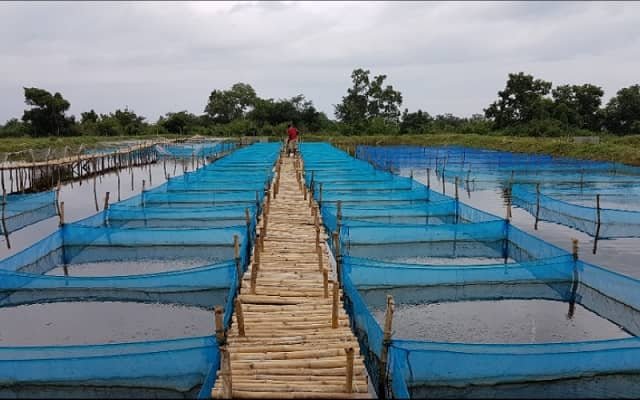PT. STP Tilapia Cage Fish Farm in Lake Toba, North Sumatra, Indonesia, a JAPFA holding company, has adopted USSEC’s 90 percent satiation level feeding technique in its R&D floating cages and will start the second phase feeding trial with USSEC Southeast Asia’s Aquaculture Program. In addition, U.S. soybean meal is used in its feed ingredients and Aquanetix application is used during the trial. The trial is expected to end at the end of this year.
USSEC’s 90 percent satiation feeding method has been introduced since the early 2000s in Indonesia (West Sumatra, West Java, East Java, Central Java, Bali, and North Sumatra Provinces) in low-volume high-density (LVHD) floating cages for both marine and freshwater cultured fish. Based on the trial results and experiences, this feeding method has lowered feed conversion ratio (FCR) by 0.20 and lower working time by 50 percent, although it is always difficult to train technicians in the first practice time. This feeding method has been introduced in China and other Southeast Asia countries as well and it has been modified from 20-minutes feeding time on the first day to 15-minutes or 25- and 30-minutes with seven or ten feeding cycles.
USSEC’s feeding method will be introduced to more fish farms and fish farmers to be a common feeding method to benefit aquaculture stakeholders in Indonesia and other Southeast Asia countries. This program is expected to countermeasure complaints of feed being one of aquaculture’s highest operating costs with an ever-increasing feed price.
Source: USSEC
Editor at the digital magazine AquaHoy. He holds a degree in Aquaculture Biology from the National University of Santa (UNS) and a Master’s degree in Science and Innovation Management from the Polytechnic University of Valencia, with postgraduate diplomas in Business Innovation and Innovation Management. He possesses extensive experience in the aquaculture and fisheries sector, having led the Fisheries Innovation Unit of the National Program for Innovation in Fisheries and Aquaculture (PNIPA). He has served as a senior consultant in technology watch, an innovation project formulator and advisor, and a lecturer at UNS. He is a member of the Peruvian College of Biologists and was recognized by the World Aquaculture Society (WAS) in 2016 for his contribution to aquaculture.




